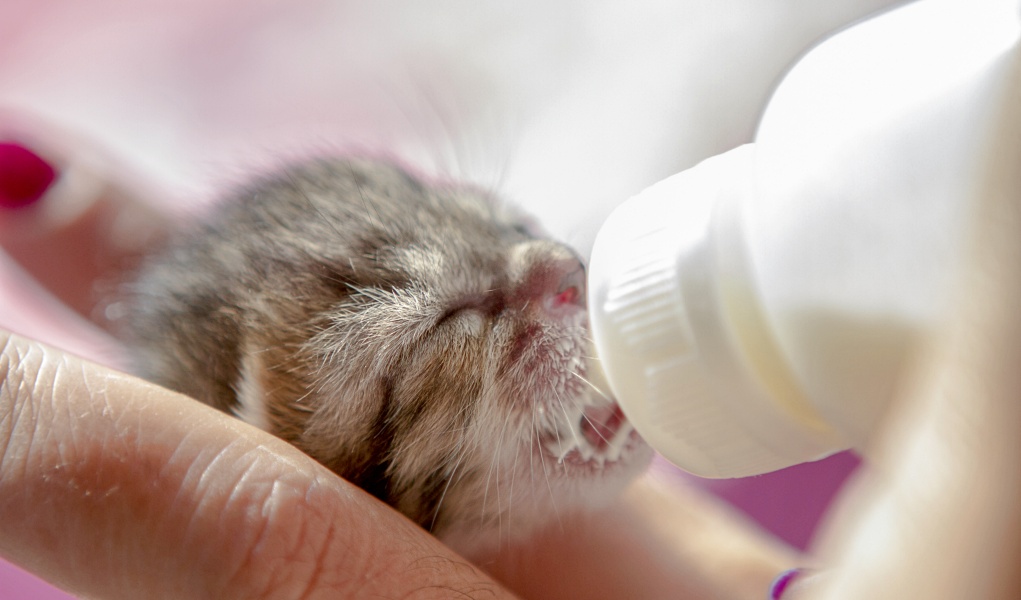Sometimes, mother cats are not able to produce enough milk to feed their kittens. Other times they may be unwilling to do so, or maybe the kitten was separated from the mother much too soon. Regardless of the reason, knowing how to make homemade kitten milk replacer may need to be considered to feed kittens at home by yourself.
Milk replacer for kittens is the equivalent to baby formulas for humans, except it's specifically made for nursing kittens without their mother. Generally, it's best for a mother cat to feed a newborn kitten when possible. If you do have to bottle feed a kitten, always consult with your veterinarian beforehand.
Whether or not you should use a homemade milk replacer or a store bought brand isn't the only factor to consider. A veterinarian will also guide you in the proper amount and times to bottle feed, which needs to be adjusted as kittens age.
Learning how to make homemade kitten milk replacer will give the baby enough nutrition, but it does not include the important nutrients that can only come from the mother's milk. For this reason, you must consult your veterinarian before trying to feed a kitten with this recipe.
How To Make Homemade Kitten Milk Replacer
 The first thing you need to know when attempting to make kitten milk at home is that you should NEVER use cow's milk as a milk substitute for your kittens. The milk that you buy at the grocery store is watered down and doesn't contain enough calcium, phosphorus, and other essential nutrients needed for a kitten's healthy growth.
The first thing you need to know when attempting to make kitten milk at home is that you should NEVER use cow's milk as a milk substitute for your kittens. The milk that you buy at the grocery store is watered down and doesn't contain enough calcium, phosphorus, and other essential nutrients needed for a kitten's healthy growth.
Cow's milk can also cause digestive upset in kittens. You shouldn't use it as a milk replacer, and you also should not use it in any of your homemade kitten milk recipes. Instead of store-bought cow's milk, you should use evaporated milk or goat's milk.
If you need to bottle feed a kitten for a short amount of time, this is the recipe that I recommend (but be sure to consult your veterinarian before feeding):
- 6 tbsp. condensed milk
- 6 tbsp. water
- 1/2 cup plain yogurt (NOT low fat)
- 3 large egg yolks
Mix the ingredients together in a bowl and whip until well blended. Feed the kitten with a kitten bottle or syringe. Leftover should be stored in the refrigerator for no longer than 24 hours. Heat refrigerated milk replacer to room temperature before feeding it to your kitten.
Around the time that your kitten reaches 6 weeks of age, you can begin to mix the milk replacer that you're using with weaning food. This is a decision best made by your veterinarian. They will assist you in deciding when the kitten is ready to begin transitioning to solid food and you help you choose the best diet for your aging kitten.
Making homemade kitten milk replacer isn't necessary. You can certainly buy pre-made products that will contain all the essential nutrients a growing newborn kitten needs. Some of these will even be fortified with additional vitamins, minerals, and probiotics.
READ NEXT: Kitten's Development in the First 6 Weeks












